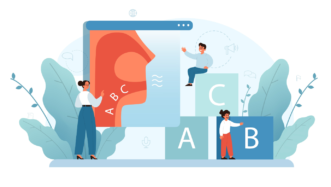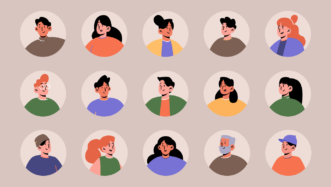LESSON OVERVIEW
We’ve recently celebrated 50th anniversary of the first Moon Landing. There are so many conspiracy theories around this historic event that we decided to create a whole lesson plan about conspiracy theories. Your students will have a bit of a fun discovering weird theories but also practise using advanced passive structures.
Approach the topic cautiously so you don’t ridicule anyone. You never know whether your students believe that the world is run by interdimensional race of shapeshifting lizards 🙂
C1 / Advanced45 minFlipped LessonUnlimited Plan
This is a Flipped Classroom lesson plan. In a nutshell, it means that the first part of the lesson needs to be done by students at home. Learn more about flipped classroom and how we implement it in these lesson plans in our post.
PRE-CLASS ACTIVITIES
At home, students need to focus on listening comprehension tasks as well as grammar points. First, they need to watch a short TV report about conspiracy theories and answer a few questions about it. Then, students have to watch the video one more time and write down all conspiracy theories mentioned in the material. The second part of pre-class worksheet deals with grammar. This time, your students need to study a table with passive voice structures used for opinions. There are sentences starting with “it is said that”, “he is thought to be”, etc. Following the examples from the table, students have to do two tasks. In the first one, they have to rewrite the sentences so that they start with underlined words. In the second one, they have to rewrite given sentences again, but this time all of the sentences need to start with “it”. Having practised that grammar structure at home, your students will be able to use it in speech during the class.
If you believe this grammar point might be a bit to hard for your students, just let them study the chart at home and weave in those grammar task into the in-class part (we recommend doing that after ex. 2).
IN-CLASS ACTIVITIES
The in-class worksheet starts with a short task on vocabulary that students might need later in their discussions. They have to choose the odd word out from four words provided in each line. There are such words as debunk, disprove, evidence, hoax, sham, etc. After that, they move to general discussion points about conspiracy theories and what they’ve watched at home.
Finally, students will have to put in practice all the knowledge they’ve acquired from the worksheets. Each of them will get one or two descriptions of some popular conspiracy theories (see page 3 and 4 of the Teacher’s version). Their task is to read the description and summarize what it is about using such structures as “it is believed” or “he is thought to be”, etc. Then, they also have to explain what they think about that conspiracy theory.
WORKSHEETS
Subscribe to unlock these and many other Standalone lesson lesson plans with the Unlimited plan
Subscribe













This lesson is very interesting, but I don’t like how the video provided no subtitles in English. I had to find another video on youtube to supplement to video that still worked within the lesson.
Unfortunately, not all YouTube videos have CC – sometimes the uploaders disable the auto-captioning service (I don’t know why)
I think students improve their listening ability with no subtitles. By showing them they just focus on reading. They hear but don’t listen.
Marc, you’re absolutely right!
What video did you find Melissa? I’d like to use this class but for A2 students
I’m unable to use this lesson as the video is not able to be played in Australia
I Found a link that will work in Australia – https://www.cbsnews.com/news/whats-behind-conspiracy-theories/
Great and thanks for the share! We can’t possibly predict/know YouTube copyrights around the world, so thanks for letting us know
Thanks so much for posting the link! I just finished creating my lesson and saw that the video didn’t work! You are a legend!!!!!
you guys know where i can get materials that is suitable for online zoom lessons?, im an online english tutor
Hi! Well, you’re in the best place for that! We got over 500 digital ready-to-use ESL lessons here that you can use in your online classroom. Check out some free e-lesson plans here to discover what we create.